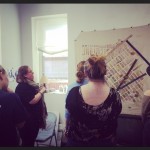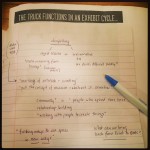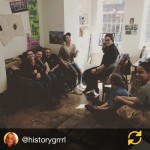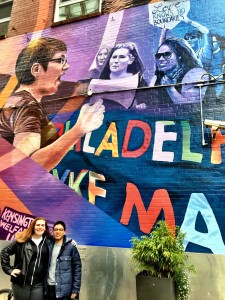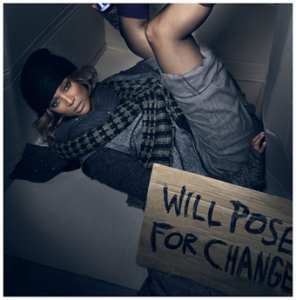Bryn Mawr Now: Cataloging Fever’ Strikes Student Organizations and (Re)constructing women: scaled portrayals of privilege and gender norms on campus made me stop and think for a second about how the two pieces were related….
Coming from my background as a traditional aged student who has lived (and will live) all four of my undergraduate years on the Bryn Mawr Campus, I was thinking about how my privileges have effected the space that I inhabit. How does my body navigate Bryn Mawr? The first thing I thought about was my physical ability- for the most part, I can get around BMC pretty well. I have access to most of the spaces on campus, and I can get around without help. But do I actively use all of the spaces that I can arguably get into? No- and that’s where our social stratification begins. The things that I chose to do/am given the ability to do on campus affects the spaces on campus that I view as ‘mine.’
I think about the spaces that I inhabit to be ‘mine’- that is, I feel a partial ownership for them. For example, being an HA, whenever I see trash on my hall I pick it up. It may not be my trash, but it’s ‘my’ space, which I feel responsible for. In opposition, I thought of the time when I was SGA secretary- I had access to the SGA Offices in the SGA House. I would go into the office space when I needed to get away and do work, but I also would occasionally feel like that space wasn’t ‘mine.’ Upon reflection, I think this is because only few students have the access to this space, and because of the limited access (although I had more accessibility to the space) I had less claim to the space. Communal space is founded on living together, and taking care of things together, whereas spaces that only support limited access by certain students are given as a privilege, which I know is a temporary space. This temporary space, to me, doesn’t feel like it’s mine, in contrast to a space that I have to share with a larger group of people. This expands my mental map of Bryn Mawr significantly, rather than spaces I am actually ‘in charge of’ or have ‘ownership’ of.
As I was teasing out this idea of space and my mental map of Bryn Mawr, I was also playing around with the idea of ownership. What does ownership mean in the context of a undergraduate narrative? One thing that I thought of was May Day gifts, which tied my thoughts back to “Bryn Mawr Now: Cataloging Fever’ Strikes Student Organizations.” Although student organizations have an interest in cataloging items such as books, the greater Bryn Mawr population contributes to a cataloging project that (I would argue) the vast majority of them don’t know that they are participating in- May Day Gifts. Each May Day gift comes with a list of the previous owners, and occasionally a little note with it. It is up to the owner to find a new owner who will hopefully pass on the item to another student, who will pass it on to another, and so on. Although this is a process that wasn’t addressed in the article, I still think that it has value in regards to our campus culture, and how we find value in such items.

